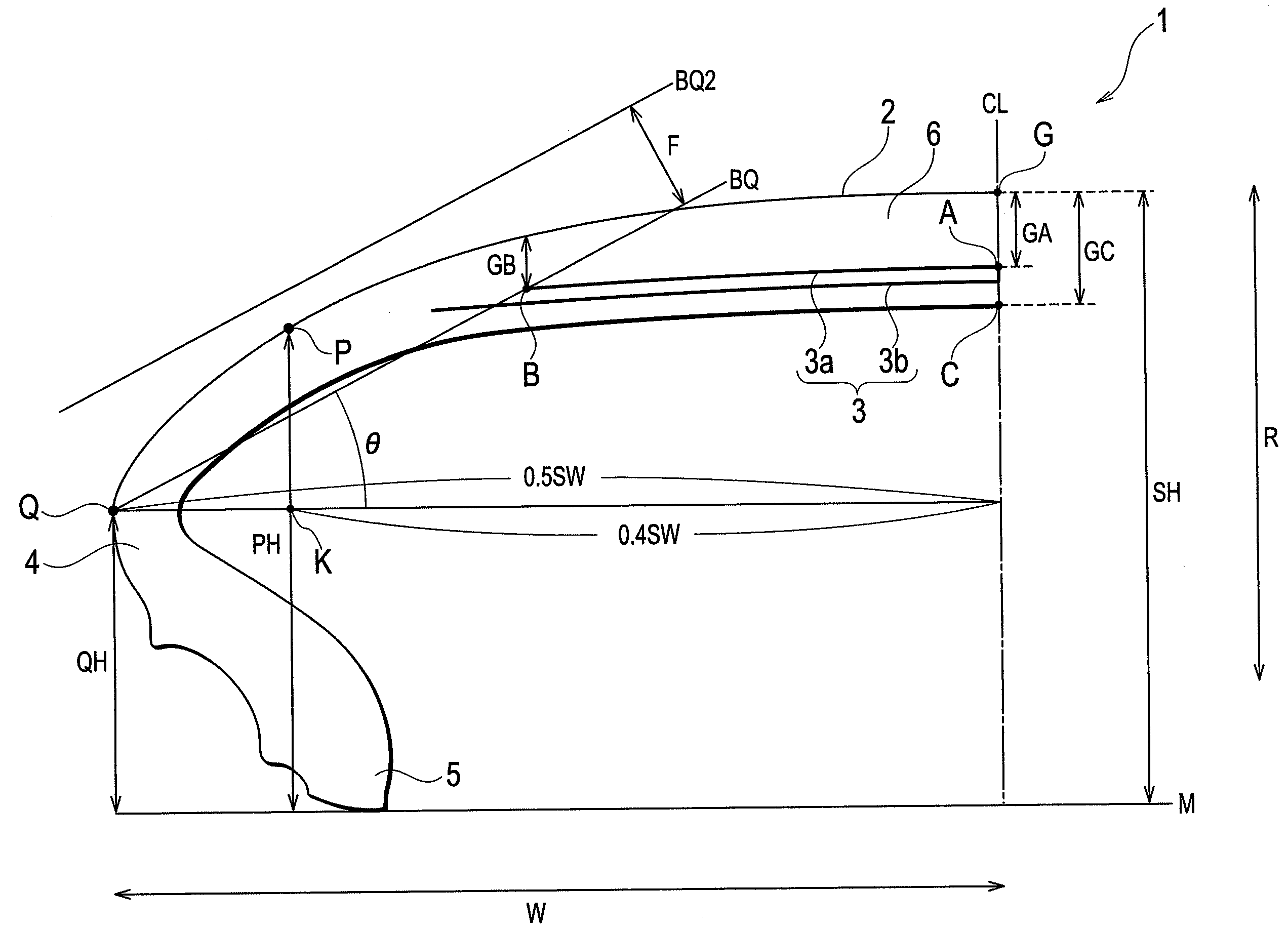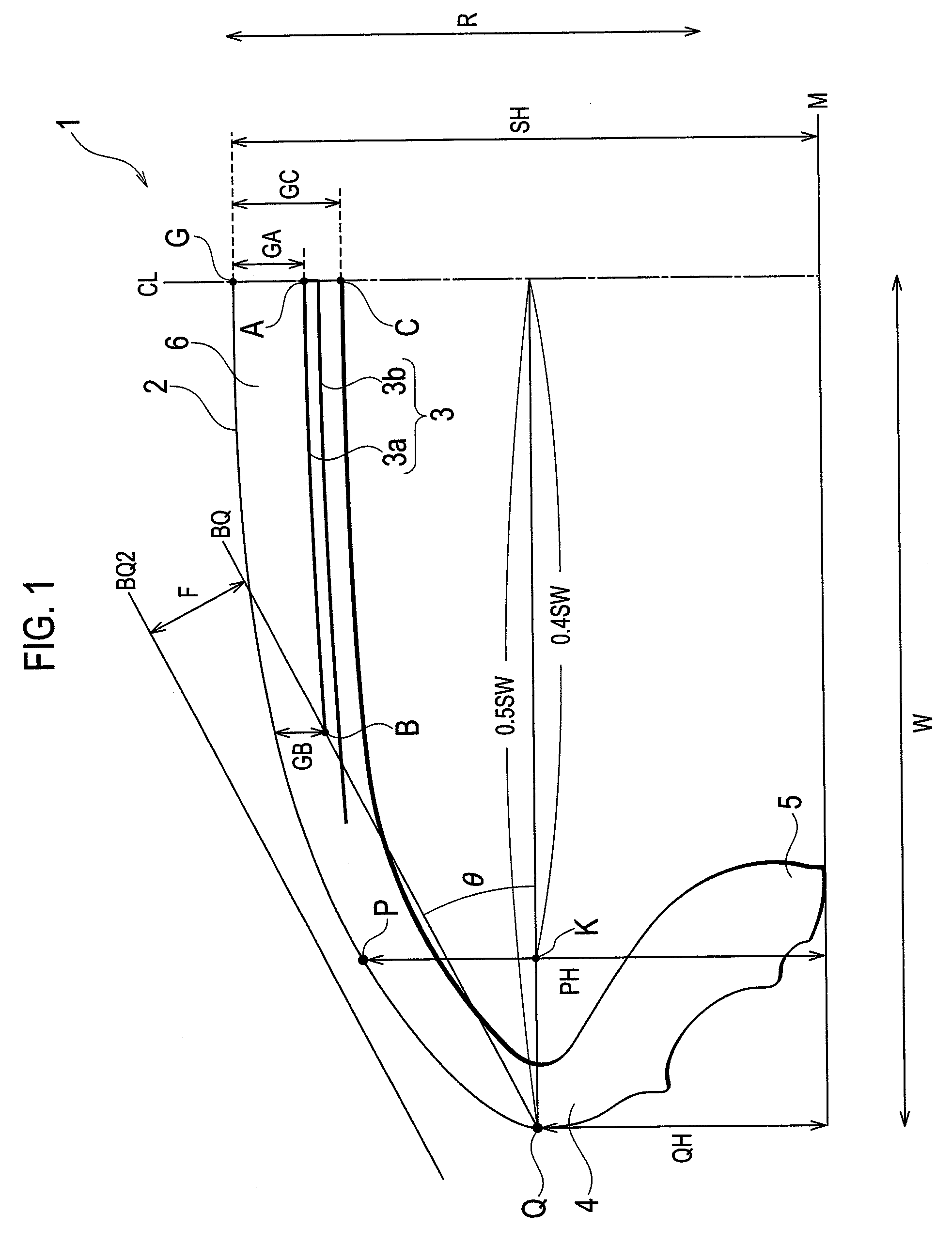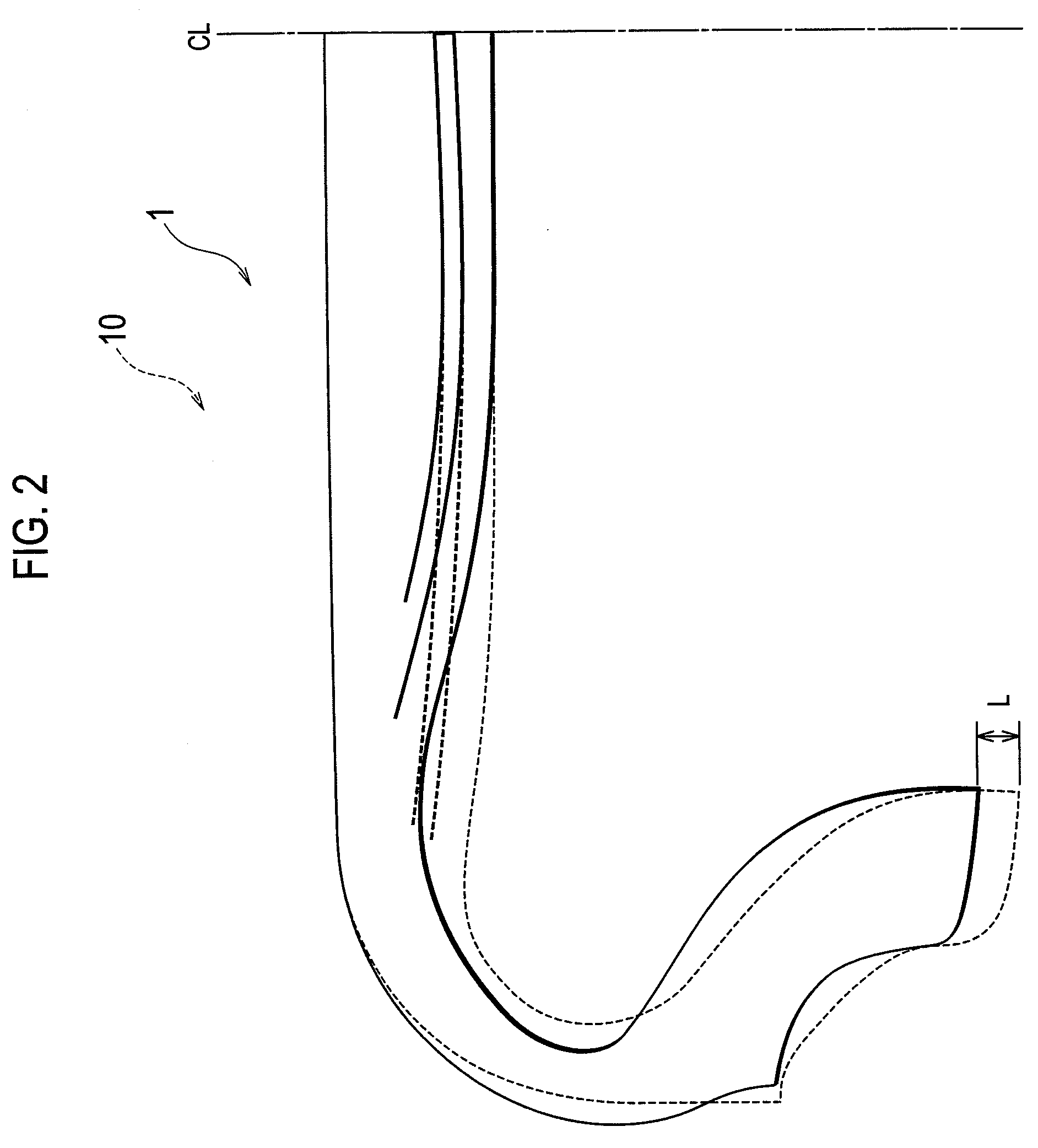Pneumatic tire
a pneumatic tire and tire body technology, applied in the field of pneumatic tires, can solve the problems of reducing the durability and wear resistance of the tread part, and the wear resistance may be reduced, so as to reduce the energy loss, reduce the amount of tire distortion, and narrow the crossing width of the belt layer
- Summary
- Abstract
- Description
- Claims
- Application Information
AI Technical Summary
Benefits of technology
Problems solved by technology
Method used
Image
Examples
first embodiment
[0028]Descriptions will be given below of a pneumatic tire 1 according to an embodiment.
[0029]FIG. 1 is a cross-sectional view showing a pneumatic tire according to the present embodiment. Please note that the drawing shows only one side of the pneumatic tire 1 from the tire equator line CL.
[0030]As shown in the drawing, the pneumatic tire 1 includes a tread part 2, belt layers 3, sidewall parts 4, and bead toes 5.
[0031]The tread part 2 is a thick rubber layer which contacts a road surface, and is for protecting the belt layers 3 to be described later and the like.
[0032]Each of the belt layers 3 is formed of a plurality of parallel cords covered with rubber, and is disposed on the inner side of the tread part 2 in the radial direction of the tire (an arrow R direction). Here, the belt layers 3 include at least two layers, a shortest belt layer 3a, the length of which in the tire width direction W is shortest, and a longest belt layer 3b, the length of which in the tire width directi...
second embodiment
[0059]Descriptions will be given below of a pneumatic tire 1 according to a second embodiment.
[0060]FIG. 5 is a cross-sectional view showing the pneumatic tire 1 according to this embodiment. Please note that the drawing shows only one side of the tire from a tire equator line CL in the pneumatic tire 1.
[0061]As shown in the drawing, the pneumatic tire 1 includes a tread part 2, belt layers 3, sidewall parts 4, and reinforcing layers 7.
[0062]Since the descriptions of the tread part 2, the belt layers 3 and the sidewall parts 4 overlap with those in the first embodiment, descriptions thereof will be omitted.
[0063]In the cross section, each reinforcing layer 7 extends from a position in the inner side in the tire width direction than an edge of a longest belt layer 3b to the vicinity of a line segment SW, and is disposed on the inner side in the radial direction of the tire than the belt layers 3 on the innermost side in the radial direction of the tire. Here, each of the reinforcing ...
third embodiment
[0066]Descriptions will be given below of a pneumatic tire 1 according to a third embodiment.
[0067]The pneumatic tire 1 includes a tread part 2, belt layers 3, and sidewall parts 4.
[0068]Since the descriptions of the tread part 2, the belt layers 3 and the sidewall parts 4 overlap with those in the first embodiment, descriptions thereof will be omitted.
[0069]FIG. 6 is a view showing the belt layers 3 in this embodiment.
[0070]Assume a case where an acute angle formed by each cord 30 which forms a longest belt layer 3b, and which inclines in relation to a tire equator line CL, indicates an angle θ1, and where an acute angle formed by each cord 30 which forms a shortest belt layer 3a, and inclines in relation to the tire equator line CL indicates an angle θ2, in the cross section, as shown in the drawing. In such a case, the angle θ1 is larger than the angle θ2.
[0071]Furthermore, the cords 30 which form the shortest belt layer 3a and the cords 30 which form the longest belt layer 3b in...
PUM
 Login to View More
Login to View More Abstract
Description
Claims
Application Information
 Login to View More
Login to View More - R&D
- Intellectual Property
- Life Sciences
- Materials
- Tech Scout
- Unparalleled Data Quality
- Higher Quality Content
- 60% Fewer Hallucinations
Browse by: Latest US Patents, China's latest patents, Technical Efficacy Thesaurus, Application Domain, Technology Topic, Popular Technical Reports.
© 2025 PatSnap. All rights reserved.Legal|Privacy policy|Modern Slavery Act Transparency Statement|Sitemap|About US| Contact US: help@patsnap.com



